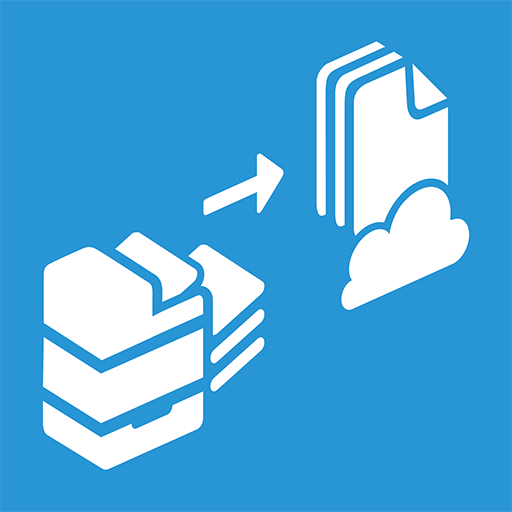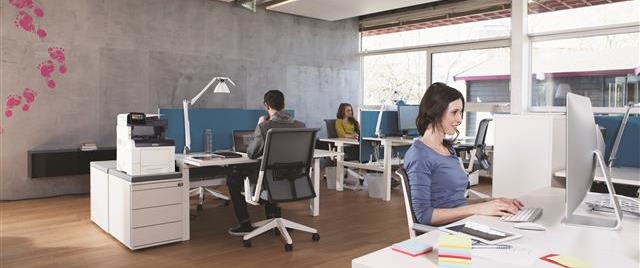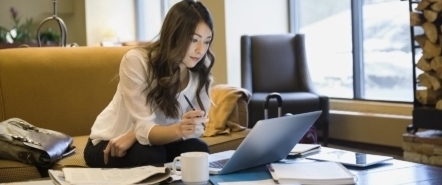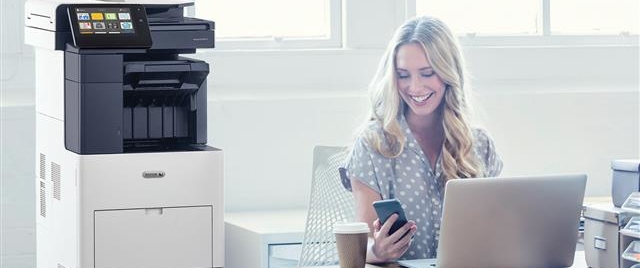Open-plan offices, closed-door offices, cubicles—with so many options for your small business’s office design and layout, how do you know which is the right one?
Too often, a small business’s workspace layout evolves by accident, as you add new equipment or employees. However, purposeful planning can make your workspace and your team more effective and efficient.
In this blog, we’ll look at the factors involved in designing an effective workspace, how to design the best layout for your business, and the latest workplace design trends.
What makes a good workspace?
There isn’t one workspace layout option that’s right for every business. The best office layout to maximize productivity at your company depends upon what you and your employees need to get done in a typical day.
That said, there are some common denominators among workspaces that promote employee satisfaction and productivity. According to global architecture and design firm Gensler’s latest US Workplace Survey, workplace design that prioritizes both individual and group workspace can enhance collaboration, employee satisfaction, and business innovation.
Both open-plan and traditional office space can be equally effective, Gensler reports, as long as they are optimized for employee performance. Gensler identified three keys to optimizing your office layout:
- Design (including the look and feel, layout and adjustability)
- Noise management
- Access to people and resources
Flexibility is key to a well-designed workspace. When employees at all levels have the option to work wherever is best suited to the task at hand, Gensler reports, employee satisfaction and productivity increase.
That includes working remotely: Gensler found that employees in highly innovative workplaces spend more time working outside the office (26% of their time on average, compared to 14% for businesses that scored poorly on innovation).
How to Plan Your Office Layout
A workspace designed around your company’s individual needs is called an “activity-based workspace,” or ABW. To create an ABW, determine what your team needs to achieve peak performance. This may include:
- Meeting spaces with closed doors
- Open areas for informal meetings, breaks or socializing
- Open workstations where employees can interact easily, as well as quiet spaces workers can go to concentrate and focus
- Plentiful outlets for charging devices
- A strong Wi-Fi signal throughout the building
Here are some other workspace design trends to consider as you plan your office layout.
- Biophilic design brings elements of the natural world into the office environment. Take advantage of outdoor views and natural lighting, bring plants and greenery inside, and create an accessible outdoor green space for meetings or breaks.
- Updated technology: While you’re updating your office, be sure to upgrade your technology. A Xerox® multifunction printer (MFP) can take the place of multiple machines while saving space and money. (Save even more by getting rebates on Xerox printers.) Sign up for email alerts on Xerox promotions to cut your costs.
- Green building and design: Recycled, environmentally friendly materials and furnishings are hot. Stretch your budget by purchasing refurbished furnishings and equipment. Xerox® sells pre-owned and remanufactured equipment that’s warrantied and inspected by Xerox® technicians. Or just trade in your old devices toward a new Xerox printer or MFP.
- Accessible design: Ramps, wider doorways, adaptive office chairs and adjustable-height desks make your workspace inclusive for employees or customers with disabilities. With a multi-generational workforce, be aware baby boomer employees may need brighter lighting and more noise reduction than their millennial coworkers. Finally, prevent workplace injuries with ergonomic office furniture.
- Centralized file storage: If you’re still relying on file cabinets for paper documents, moving data to the cloud will not only save space but also streamline workflow. By allowing your team to securely access information from any location, cloud-based file storage and sharing is the ultimate in flexibility. Use Xerox® multifunction printers (MFPs) enabled with ConnectKey® apps to scan printed documents to cloud-based services like Google Drive, Dropbox, Box, OneDrive and Office 365. The Xerox® Mobile Link app can even scan, fax and print from your mobile device by connecting with Xerox® MFPs.
 Xerox Mobile Link App – 3-in-1: Capture It, Manage It, Send It
Xerox Mobile Link App – 3-in-1: Capture It, Manage It, Send It
Xerox® Mobile Link is a mobile app that can scan, fax and print from your phone or tablet by connecting with Xerox® multifunction printers (MFPs).
Speaking of centralized, placing your printers, copiers or MFPs in centralized locations makes for easier access compared to having dozens of individual printers or MFPs spread throughout your workspace. Keep sensitive documents secure throughout the printing process with a printer like the Xerox® VersaLink® C405 Color Multifunction Printer. Its security features can password-protect documents, automatically delete sensitive documents from the printer and enable secure mobile printing.
By following these tips, your newly designed office will excel at both form and function, creating a space that powers up your team for even greater success.
Share this on Twitter!
Tweet: How to find the best office layout to maximize productivity: https://ctt.ec/N71Of+ via @Rieva
Subscribe to the Small Business Solutions Blog and receive updates when we publish a new article.




[…] the right office layout can maximize productivity at your small […]
[…] post How to Find the Best Office Layout to Maximize Productivity appeared first on Small Business […]
[…] the right office layout can maximize productivity at your small […]
Great read to share.